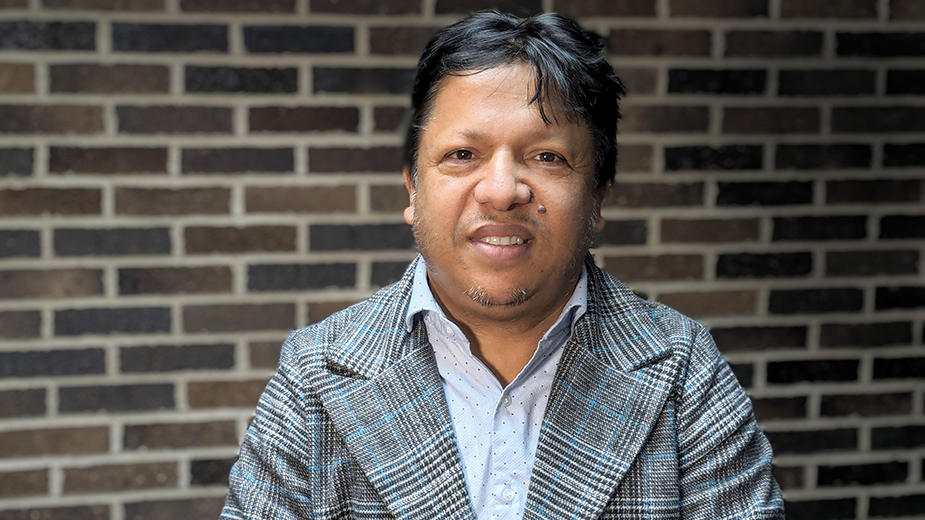YOUNGSTOWN, Ohio – Born in Bhutan, Manorath Khanal left his country at 16 when the government expelled many of its ethnic Nepalis.
“It was not our decision to come to the United States,” Khanal says. “We wanted to come – there’s no doubt – but we had been waiting to go back to our country, to Bhutan.”
Bhutan is nestled in the Himalayas between Tibet and India.
Khanal is one of many Bhutanese refugees who settled in the North Hill neighborhood of Akron. The city now boasts the second-largest Bhutanese population in the United States.
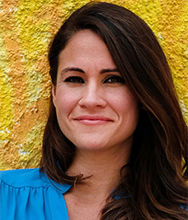
Housing there was inexpensive and enabled the Bhutanese refugees to live close to each other.
Betty Cruz, president/CEO World Affairs Council of Pittsburgh, says immigrants and refugees often settle in a neighborhood when they arrive.
One family resettles, finds opportunity and sends word about the area. “Word grows and that’s how the community grows,” Cruz says.
VALLEY REPOPULATION PLAN
As the Mahoning Valley, led by the Youngstown/Warren Chamber and Eastgate Regional Council of Governments, embarks on a repopulation effort, both Pittsburgh and Akron could provide roadmaps to guide the process.
Chamber and Eastgate officials point to what they call the three R’s of repopulation: retain young people, return people who have left for other communities and receive newcomers, including immigrants and refugees.
The Valley, which has suffered a loss in population for years, needs more people to fill the jobs that are here as well as those projected to be created over the next decade and beyond.
New Americans add to local economies by starting businesses, buying goods, paying for services and buying homes.
SOME NUMBERS
A study, “New Americans in Akron,” released in 2021 by the New American Economy, found that foreign-born residents contributed $2.1 billion to the economy of the Akron region.
New American Economy is a nonprofit, nonpartisan immigration research and advocacy organization.
Last year that same group found that 4,765 immigrants live in the Pittsburgh metro area and that immigrants are 26.8% more likely to be entrepreneurs than U.S.-born residents.
NORTH HILL NEIGHBORHOOD
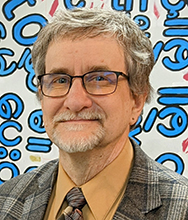
In the North Hill of Akron, Nepali clothing shops, Asian restaurants and international markets dot the neighborhood known as Akron’s international district.
The community benefits, too, says Scott Piepho, interim executive director of Asian Services in Action in Akron.
“There’s a certain energy of somebody who has landed here,” he says. “The rates of small-business formation are really high, partly because that’s a thing that they can do and especially if they were able to create a business that serves their community.”
The Bhutanese who settled in the North Hill brought that vitality to the neighborhood. “When people started getting settled in North Hill, I noticed the vibe in North Hill changing before we started having conversations about what was happening in North Hill…,” Piepho says. “I think there’s a lot of energy that comes of it.”
Before that, it was a part of the city that people were leaving, he says.
Cruz says that living in enclaves also enables new Americans to support each other. Those who have lived in the community help newcomers navigate the new way of life.
But not all of those who settle in neighborhoods with people from the same ethnic group remain there, both Piepho and Cruz say.
Many move as they secure better jobs. But they maintain connections to the neighborhoods.
VALLEY GROUPS INVOLVED
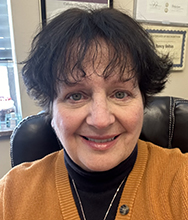
Catholic Charities, the Diocese of Youngstown and the Youngstown Area Jewish Foundation are working with the Regional Chamber in the repopulation endeavor.
Nancy Voitus, executive director of Catholic Charities Regional Agency, says the agency, along with representatives from the Diocese of Youngstown, have met with their counterparts in other cities about their refugee resettlement offices.
“When the chamber was starting the repopulation effort, we had conversations with them and we met with Catholic Charities of Cleveland, with their office of refugee resettlement about how we can work with them for our area,” Voitus says.
The local offices are learning what’s involved in becoming a refugee resettlement agency although Voitus stresses there are several steps involved and it’s early.
“It’s not a simple process,” she says. “There’s a lot of resources involved: housing, health care, education, income …,” she says. “We’re trying to look at what the Cleveland Diocese has and how we might work with them.”
Lisa Long, CEO designate and financial resource development director at the Youngstown Area Jewish Federation, says that organization has been involved with refugee resettlement for years.
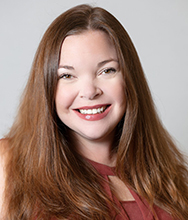
The federation was established 80 years ago.
“We helped to resettle refugees from World War II and the Holocaust here in the Mahoning Valley and in the Shenango Valley,” Long says.
The organization also helped to bring to the area Jews who weren’t permitted to practice their religion in the former Union of Soviet Socialist Republics.
“It’s something we have a lot of experience in,” Long says.
The federation is also bringing people to the area who are fleeing the war in Ukraine.
Just as the number of people in the Valley has decreased, so has the number of Jewish people. At the time Jewish Federation offices were located on the North Side of Youngstown, about 8,000 Jews lived in the area. That number is down to about 1,200, Long says.
“We believe we have a role in the repopulation of the Valley,” she says. “With a rising tide, all ships rise.”
The federation supports the repopulation effort.
“When people come to the area or come back to the area, they’re trying to find their niche, their culture. … We are happy to provide that landing ground for people who might be looking for the Jewish community,” Long says
BACK IN PITTSBURGH

Pittsburgh is a new home to refugees and immigrants who are Chinese, Somali Bantu, Congolese, Bhutanese, from many Latin American countries and other nations.
Ivonne Smith-Tapia is the director of refugee and immigrant services at Jewish Family and Community Services in Pittsburgh.
Once refugees arrive in Pittsburgh, JFCS helps them become integrated into the community, Smith-Tapia says.
That involves securing housing, helping them access government assistance, enrolling children in school, providing job training and employment placement and connecting them with agencies that provide language services.
Pittsburgh is a certified Welcoming City, a designation by Welcoming America that indicates a community’s commitment to immigrant inclusion including through policies and programs. As of 2023, there were 21 U.S. counties and cities – Dayton, Toledo and Lucas County in Ohio and Pittsburgh, Erie, Philadelphia and Lancaster, in Pennsylvania – that bear the Welcoming label.
A challenge facing resettlement agencies is shared by many natives: a lack of affordable housing.
“It’s a very challenging job because we respond to what is happening around the globe,” Smith-Tapia says. “There’s never a boring day.”
MORE ABOUT ASIA
ASIA begins working with refugees after they leave resettlement agencies. The agency works with immigrants too.
“Generally when you have a refugee population, you’ll have an immigrant population that grows parallel to it,” Piepho says.
ASIA, established in 1995, runs two federally qualified health centers, one in Akron and the other in Cleveland. It also has a legal department and victim advocacy services for victims of domestic violence, human trafficking and sexual assault.
“And then we have what is our kind of legacy, a social-service department that is the full range of social services,” Piepho says.
That includes food, housing assistance, employment, training and a special emphasis on programs for youth and the elderly.
When Piepho joined ASIA, it operated more like an ethnic community-based organization.
“It’s a social services organization with a focus on a particular population defined by ethnicity,” he says. “The organization was founded on the basic philosophy, the basic idea that immigration from an Asian country is fundamentally different than immigration from a European country.”
The cultures are starkly different but the grammar and phonemes vary in Asian languages as well, Piepho says.
In Akron, the largest refugee populations are Nepali from Bhutan, ethnic Congolese, Ka’Ren and non-Ka’Ren Burmese and Afghani, Piepho says.
“Once a community starts building,” Piepho says, “it gains momentum.”
BUILDING COMMUNITY
In Akron, the International Institute of Akron, a nongovernmental organization, is the primary resettlement entity.
New Americans bring different food and different consumer goods to a community.
“There’s also a cultural benefit,” Piepho says. “There are various cultural celebrations that happen throughout the year.”
That’s what he would say if he were talking to an immigration skeptic, but it’s bigger than that.
“But I also think that there is something important in saying [that] giving a safe landing space for somebody who literally has nowhere else on the planet to live is the right thing to do,” Piepho says. “And our community is doing the right thing. We’re opening our doors to people who, literally, settling here was a matter of life and death. For me, the reason to do it is it’s the right thing to do.”
The economics are a nice side benefit.
Still, there is much work to do when a community of refugees settles in an area. By definition, they’ve been traumatized, Piepho says.
“Some will take that trauma and just because of how they’re wired, they direct it into becoming a great entrepreneur or a doctor or a lawyer or a policeman,” he says.
For others, help must be available.
EMPLOYMENT FOR REFUGEES
Companies, particularly those with work that doesn’t require a mastery of English, often want to hire refugees, he says.
“They figure out pretty quickly these people work really hard,” Piepho says.
Case Farms, a poultry processing company near Akron, is one of the big companies that hires. Some stay there long term. Others move on to other companies and professions.
Khanal, the refugee from Bhutan, is one of those who started at Case. He worked his way up to become a supervisor and then to a position where he worked with company executives. He worked there for seven years.
In the refugee camp, Khanal taught English, was elected leader of the refugees and worked with the Nepalese government. His English gave him an advantage when he arrived in the United States.
“I feel very welcome,” Khanal says.
A LONG ROAD
But Khanal, who is the president of the Bhutanese Community Association of Akron, traveled a long path to get to Akron.
The refugees forced out by the Bhutanese government initially formed a resettlement camp in Nepal.
Nepal and Bhutan conducted several rounds of talks for the refugees to return to their homeland without reaching an agreement. Those forced out requested citizenship from the Nepali government but were turned down.
In 2006, the U.S. government agreed to resettle 60,000 Bhutanese refugees. They resettled in other countries, too.
“We were selected to come to the United States and I went to Phoenix, Arizona,” Khanal says.
He and his family made the move from a refugee camp in Nepal when he was 33.
Khanal and his family lived in Phoenix about four years and Khanal worked for Delta Airlines. But the family found it hard to adjust to the heat.
His uncle was living in Akron and told him there were many jobs available.
“I have a big family and they all wanted to work,” Khanal says.
They moved to Akron and the North Hill area.
The family later moved to Cuyahoga Falls. Khanal is joint owner with two others of an employment agency. He’s also a shareholder in a pharmacy and owns a small transportation company.
“When they were first here, there was a lot of frustration,” he says, because people faced challenges assimilating.
That’s improved.
“We are happy here, very happy,” Khanal says.
It’s not possible to return to Bhutan now, he says. Although the Bhutanese living in the United States hope to one day get justice. In the meantime, they’re doing well in northeastern Ohio.
“People feel very welcomed,” he says. “They have a job. They have a car, a house, a better school and better hospital here. We have everything in America and American government, American people have given us so much. I want to thank them, a lot. Without America being there, I don’t know if we would have even survived.”
The Bhutanese Community Association of Akron helps Bhutanese new to the area navigate the challenges of coming to a different country.
“We want to try to make them independent, not dependent,” Khanal says.
THE RIGHT THING
Piepho believes ASIA and other organizations that share similar missions do important work.
“We’re doing this thing that’s the right thing to do and also helping people make a new life,” he says.
The organization is also “bringing in the next generation of Americans. I am cognizant of the history of this country as a nation of immigrants.”
He acknowledges that statement has almost become cliche, but he trusts that it’s true.
“Everything from our food, to our music to our holidays to our aesthetics is influenced by this wonderful soup of all these people bringing their gifts from all over the world,” Piepho says. “Work at a place like this and you have the opportunity to welcome the new groups of people with [their] new gifts.”
Pictured at top: Manorath Khanal, a refugee from Bhutan, came to the U.S. when he was 33 from a refugee camp in Nepal. He is the president of the Bhutanese Community Association of Akron.
